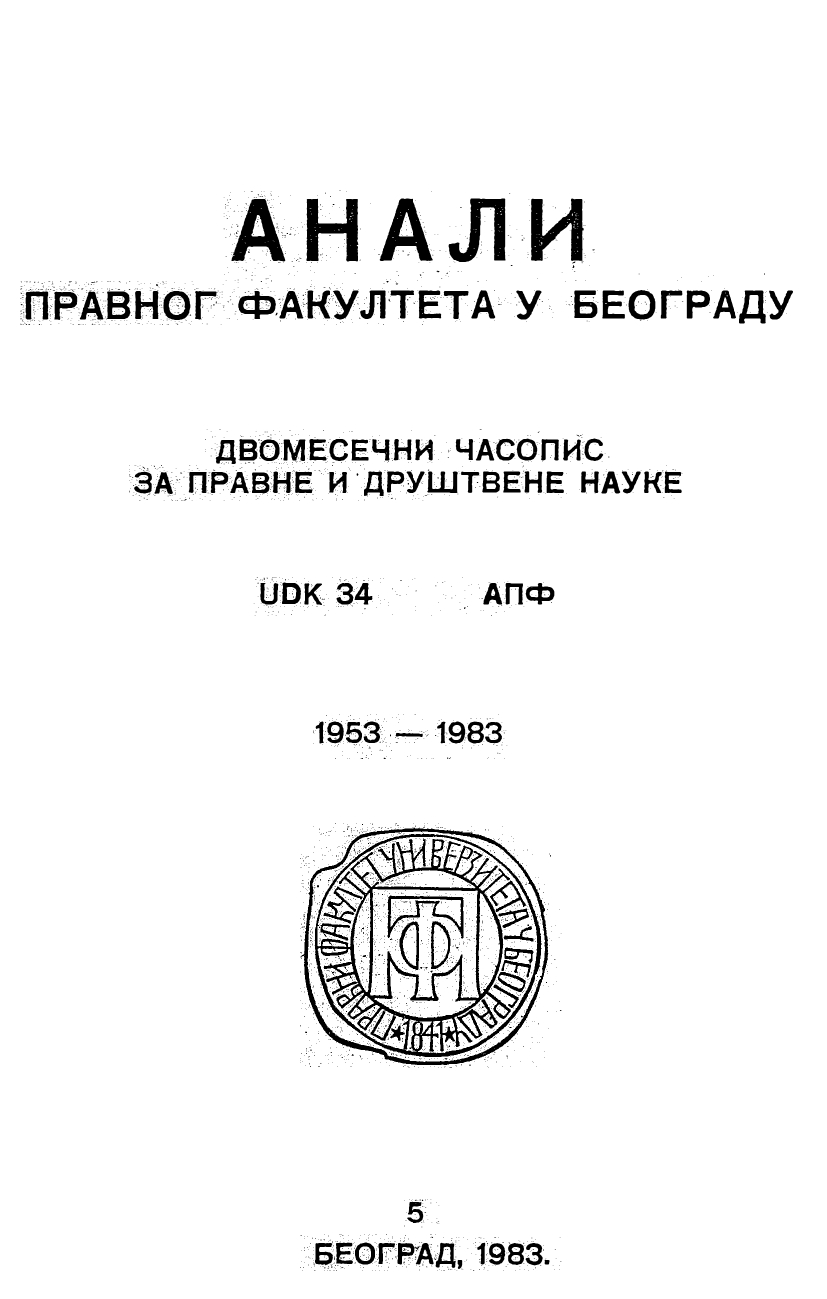НАЗИВИ МЕЂУНАРОДНИХ УГОВОРА
DESIGNATION OF INTERNATIONAL TREATIES
Author(s): Momir MilojevićSubject(s): Law, Constitution, Jurisprudence, Commercial Law
Published by: Правни факултет Универзитета у Београду
Summary/Abstract: There have been numerous alterations in the law of treaties in regard to the designation of treaties. International practice has revealed an immense versatility in this field. D.P. Myers has cited 39 designations of treaties which the USA have become a party to during the period from 1864 td 1952. However, there is even today certain merit to Martens’ opinion that efforts to classify international treaties have yielded poor results. It has been commonly accepted that diverse terminology has no legal meaning whatsoever. Still, the registration of international treaties in the League of Nations (Article 18 of the Covenant of the League of Nations) and the United Nations (Article 102 of the United Nations Charter) has been the cause of discussions concerning the meaning and scope of the notions of .,treaties” and „agreements”. This is all the more important because international acts of general significance use diverse terminology not only in individual cases but also as generic notions. There is a similar situation in regard to the constitutions of States. The United Nations International Law Commission has adopted the term „treaty” as a general namet. According to its definition, a „treaty” would be any international agreement whatever its particular designation. It has also been determined that this definition is without prejudice to the use of those terms or to the meaning which may be given to them in the internal law of any State. This same formulation was later adopted by the Vienna Convention on the Law of Treaties, in 1969. Legislation in Yugoslavia is also using to term „treaty” as a generic notion. This is especially suitable from the linguistic point of view. Discussions on the question of names of international treaties have revealed designations which have been in use in internal acts of law during the past (amendments, protocols, minutes, programs, plans, regulations etc.). There is an evident endeavour to achieve unification of the technique of internal and international law. It should not be forgotten that terms such as constitution, statute, treaty and agreement are used both in internal and international law. In that respect, there is a mutual influence. This is ail the more evidence of the interdependence of international and internal law to the extent in which there has been achieved a unity of international order and internal orders as expression of the identity of national and international interests.
Journal: Анали Правног факултета у Београду
- Issue Year: 31/1983
- Issue No: 5
- Page Range: 873-898
- Page Count: 26
- Language: Serbian

